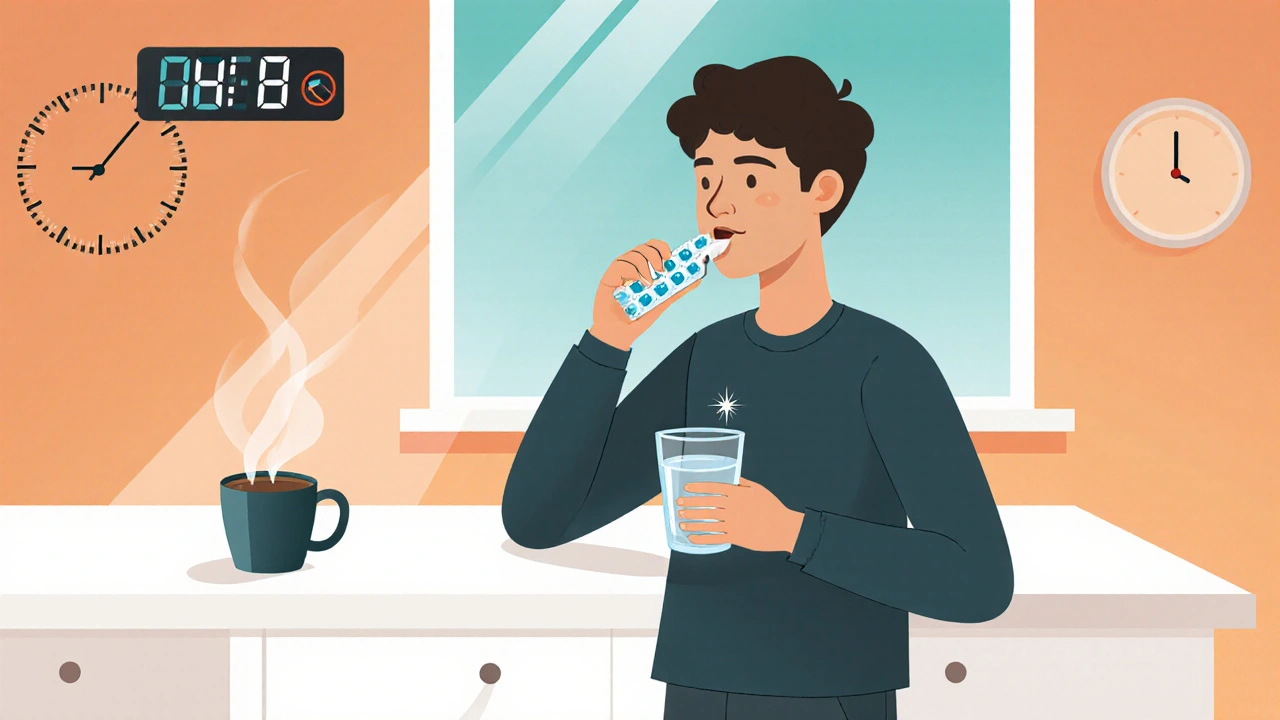Best Way to Take Levothyroxine – Simple Tips for Steady Hormone Levels
When working with Levothyroxine, a synthetic thyroid hormone prescribed for hypothyroidism. Also known as T4, it replaces the hormone your thyroid can’t make enough of, helping you feel normal again.
Understanding hypothyroidism, the condition of low thyroid hormone production is key because the disease drives the need for levothyroxine. The goal is to keep your TSH level, the blood test that tells how hard your pituitary is working to stimulate the thyroid in the target range. Consistent dosing and proper timing make the test results reliable and your symptoms manageable.
Here’s the best way to take levothyroxine: take a single tablet with a full glass of plain water, first thing in the morning, and wait at least 30 minutes before eating. This empty‑stomach rule maximizes absorption because food, especially high‑fiber meals, can bind the pill and lower the amount that reaches your bloodstream.
Key Factors That Influence Absorption
Several everyday items can sabotage the drug’s uptake. Calcium‑rich foods, dairy products, and calcium supplements are the biggest culprits; they form complexes with levothyroxine that the gut can’t absorb. To avoid this, keep a gap of four hours between the pill and any calcium source, including antacids. Iron, soy, and high‑fiber cereals act similarly, so space them out too.
Acid‑reducing medications like proton‑pump inhibitors or H2 blockers raise stomach pH, which also reduces levothyroxine absorption. If you need these meds, talk to your doctor about adjusting the levothyroxine dose or switching to a formulation less sensitive to pH changes.
Consistency matters more than the exact hour you swallow the pill. Taking it at the same time each day stabilizes your hormone levels, making the TSH test easier to interpret. Some people find it easier to take levothyroxine at bedtime if they skip breakfast; just wait two hours after dinner and avoid late‑night snacks.
Weight changes, pregnancy, and certain illnesses can shift how your body processes levothyroxine. Regular thyroid function tests, especially TSH checks every 6‑12 weeks after a dose change let you and your doctor tweak the dosage before symptoms flare up.
When you’re on multiple prescriptions, check for drug‑drug interactions. Certain antidepressants, cholesterol‑lowering drugs, and seizure meds can either boost or block levothyroxine’s effect. A quick medication review with a pharmacist can catch hidden interactions before they cause trouble.
Finally, store levothyroxine properly: keep it at room temperature, away from moisture and heat. A humid bathroom can degrade the tablet, reducing its potency. If you notice a change in pill color or shape, replace it with a fresh bottle.
By following these practical steps—empty stomach, timed gaps from calcium and iron, consistent daily timing, and regular lab monitoring—you’ll give levothyroxine the best chance to work. Below you’ll find a collection of articles that dive deeper into each of these topics, from detailed interaction guides to tips for managing thyroid health during pregnancy and beyond.

Levothyroxine Absorption: Timing Tips & Common Interference
Learn how timing and food interactions affect levothyroxine absorption, get practical tips for morning or evening dosing, and discover newer formulations that simplify thyroid medication management.
Read More